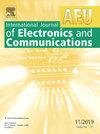A 75.12-nW 0.5-V MOS-based BGR comprising a curvature compensation circuit for analog-to-digital converter applications
IF 3
3区 计算机科学
Q2 ENGINEERING, ELECTRICAL & ELECTRONIC
Aeu-International Journal of Electronics and Communications
Pub Date : 2025-02-01
DOI:10.1016/j.aeue.2025.155678
引用次数: 0
Abstract
This research presents a low-power metal–oxide–semiconductor field effect transistor (MOSFET)-based bandgap reference (BGR) circuit that operates without bipolar transistors, aiming to minimize the required supply voltage and active area for low-voltage applications. All MOSFETs within the proposed bandgap reference circuit function in the subthreshold region, effectively reducing power consumption. Additionally, a curvature compensation technique is presented to enhance the temperature coefficient and extend the operational temperature range. The proposed BGR circuit, simulated using a 65-nm complementary metal oxide semiconductor (CMOS) process, demonstrates a simulated reference voltage of 0.223 V and temperature coefficient (TC) of 18.16 ppm/°C for the reference output across a wide temperature range of −60 °C to 160 °C. Furthermore, the circuit occupies a compact silicon area of 0.0028 mm2. and consumes a power of 75.12 nW at 25 °C. The proposed bandgap reference circuit is well-suited for providing reference voltages in various integrated circuits, particularly in high-precision low-voltage analog-to-digital converters.
求助全文
约1分钟内获得全文
求助全文
来源期刊
CiteScore
6.90
自引率
18.80%
发文量
292
审稿时长
4.9 months
期刊介绍:
AEÜ is an international scientific journal which publishes both original works and invited tutorials. The journal''s scope covers all aspects of theory and design of circuits, systems and devices for electronics, signal processing, and communication, including:
signal and system theory, digital signal processing
network theory and circuit design
information theory, communication theory and techniques, modulation, source and channel coding
switching theory and techniques, communication protocols
optical communications
microwave theory and techniques, radar, sonar
antennas, wave propagation
AEÜ publishes full papers and letters with very short turn around time but a high standard review process. Review cycles are typically finished within twelve weeks by application of modern electronic communication facilities.

 求助内容:
求助内容: 应助结果提醒方式:
应助结果提醒方式:


